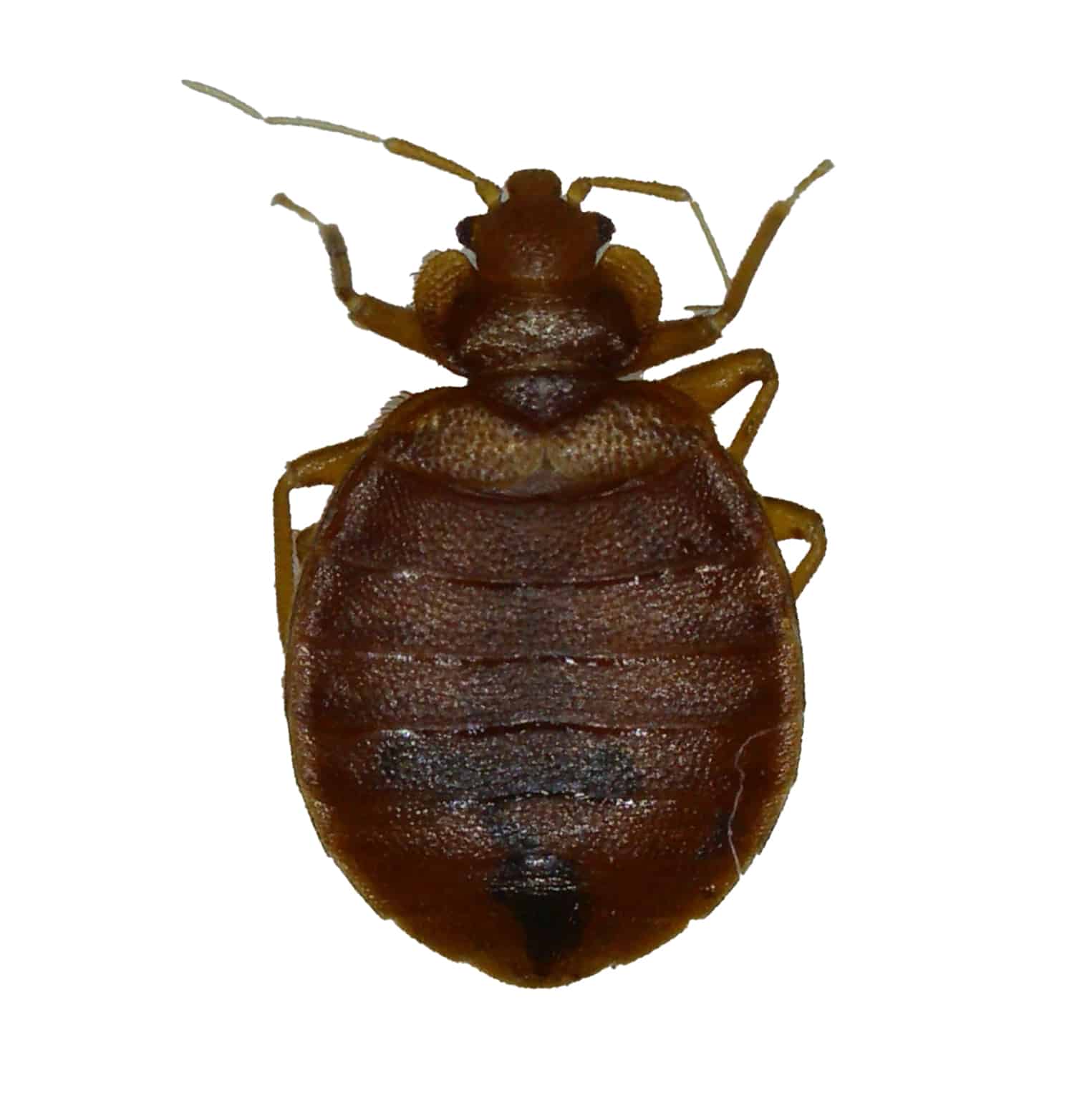
In the article
Before they eat, these bugs are brown and flat. After they feed, they become tubular and their colour changes to a dark blood-red colour. Their size and shape change a lot after feeding, making them easier to spot if they’ve just had a meal.
Baby bed bugs, or nymphs, are way smaller and harder to see than adults. They’re usually about 1.5 millimetres long. Their tiny size and see-through to whitish-yellow colour make them tough to spot.
After they eat, they turn dark brown and look like mini versions of the adults. Besides baby bed bugs, keep an eye out for their eggs, which are white and about one millimetre long. These eggs are nearly invisible on most surfaces.
Picture Gallery Of Bed Bugs
Click on the image to enlarge.
Bed Bug Behavior and Habits
Getting a handle on bed bugs’ behavior and habits is key to kicking them out for good. These little bloodsuckers are sneaky, especially since they love to come out and play when you’re fast asleep.
Bed Bugs are Nocturnal Insects
Bed bugs are like the vampires of the pest world—they’re most active at night. When the lights go out, they crawl out of their hiding spots to feast on your blood. This nighttime activity makes them hard to catch unless you’re a night owl yourself. They usually chow down for about 3-10 minutes before scurrying back to their hidey-holes.
In really bad infestations, you might even spot them during the day as they run out of prime hiding spots.
Where Do Bed Bugs Hide?
Bed bugs are masters of hide and seek. They can squeeze into spaces as thin as a credit card. They love dark, tight spots close to their food source—you. Their favorite hangouts include mattress seams, bases, and bed frames.
As their numbers grow, they’ll spread out to other parts of your home. You’ll find them in clothes, linens, under clutter, and even in wall voids and around moldings. They can also hide in dresser drawers, cracks in wood trim, and behind wallpaper.
For more tips on spotting these pests, check out our guide on how to check for bed bugs. Knowing where they like to hang out is half the battle in getting rid of them for good.
Signs of a Bed Bug Infestation
Spotting bed bugs early can save you a lot of trouble. These tiny pests leave behind clues that can help you catch them before they take over your home. Let’s break down what to look for.
Signs on Mattresses and Furniture
Bed bugs love to hide in the seams of your mattress, inside bed bases, and in the nooks of your furniture. Here’s what to keep an eye out for:
- Poop: Bed bug droppings looks like tiny black ink spots, they can be found on your skin, mattresses, couches, and other furniture,
- Bloodstains: You might see small bloodstains where bed bugs have been squished.
- Shed Skins and Eggshells: As bed bugs grow, they shed their skins. You’ll find these along with tiny eggshells in mattress seams and furniture joints.
- Live or Dead Bed Bugs: If you have bed bugs there is a very good chance they are on your mattress.
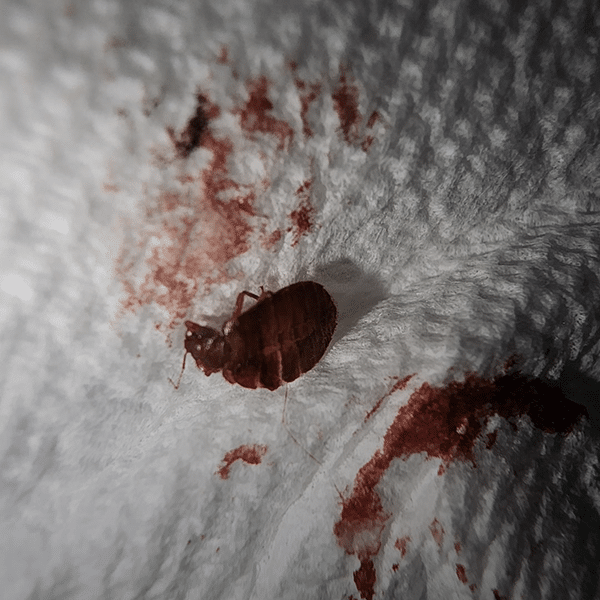
Squashed Bed Bug
For more details on spotting these signs, check out our guide on how to check for bed bugs.
Bed Bug Bites
Bed bug bites are another big giveaway. These bites often show up in lines, clusters, or a zigzag pattern and can be super itchy. They usually appear on skin that’s exposed while you sleep, like your face, neck, arms, and hands.
Bites can take up to two weeks to show up and can vary in how bad they get. Some folks don’t react at all, while others might get really itchy, red, and swollen. In rare cases, some people can have severe allergic reactions.
Allergic Reactions and Skin Sensitivities
Bed bug bites can range from “meh” to “OMG, what is that?” Some people don’t react at all, while others get red, itchy, and swollen. Bites can cause anything from mild itching to severe allergic reactions with big, itchy welts.
Sometimes, it takes up to two weeks for bites to show up, making it tricky to figure out what’s causing the itch. About 30% of people don’t react to bed bug bites at all, especially older folks. This means you could have bed bugs and not even know it for a while.
Understanding how bed bugs can mess with your health is key to dealing with these pests. Whether it’s your skin or your sanity, knowing the risks helps you take the right steps to tackle the problem.
Mental Health Impacts and Risks
Dealing with bed bugs can seriously mess with your head. Imagine trying to sleep, knowing you might get bitten. It’s no wonder people get anxious and stressed out. The constant worry can lead to insomnia, making it hard to catch those Z’s. Some folks even report major mental health issues like anxiety and insomnia.
If you’re feeling this way, it might be time to chat with a healthcare pro.
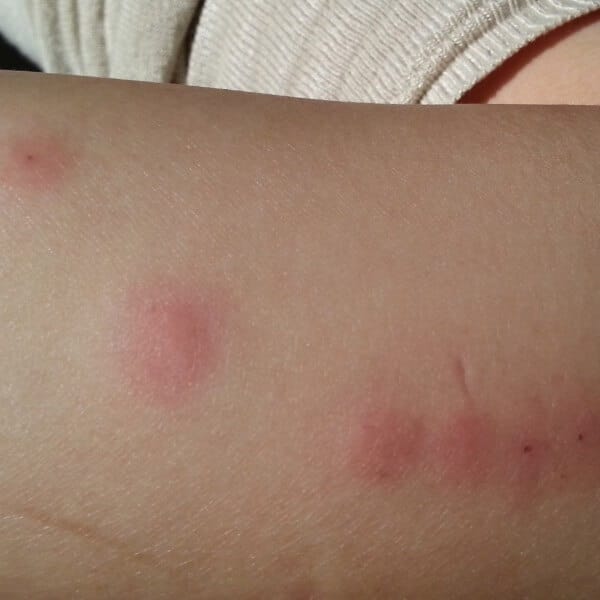
Bed Bug Bites
For more info on bed bug bites and how to deal with them, check out our article on early signs of bed bugs.
Knowing these signs can help you catch bed bugs early and take action fast.
Getting Rid of Bed Bugs Fast & Forever
If bed bugs do invade, quick and effective action is key. Here are some tried-and-true methods for kicking them out:
- Heat Treatment: Use a steamer for bed bugs to kill them instantly. Heating the entire house is expensive and usually fails because the bed bugs can go under the floor boards to escape the heat.
- Chemical Treatments: Over-the-counter sprays usually don’t work well, but professional-grade treatments can be effective sometimes. It’s best to hire a licensed pest control expert for this.
- Eco-Friendly Options: Diatomaceous Earth Dust (Bed Bug Powder), dehydrates bed bugs and works for years.
- Mattress Encasments: Encasing mattresses and bases can trap bed bugs, though it won’t get rid of them completely if they are on the bed frame.
- Barrier Traps: Use barrier traps to prevent and kill bed bugs walking up your bed legs.
If you think you have bed bugs, don’t panic. Watch these DIY treatment videos to get rid of them fast and forever.
How to Treat A Bed Frame
How Treat An Ensemble Bed
How to Prevent Bed Bugs in Your Home
Here are 7 important tips to keep bedbugs away:
- Check Hotel Mattresses When Traveling: When you stay in a hotel, always look at the mattress and bedding carefully. Look for small blood spots, dark poop stains, and live bugs.
- After Traveling: When you come back home, wash all your clothes in hot water and clean your luggage. If you have things that can’t be washed, put them in a sealed plastic bag and freeze them for four days to kill any bedbugs.
- Avoid Second-Hand Furniture or Mattresses: Don’t bring used furniture or mattresses into your home because they might have bedbugs.
- Diatomaceous Earth (DE): Use DE powder around power points and electrical outlets to stop bedbugs from coming into your home from other places. Always use a pest control company that uses DE.
- Apply Diatomaceous Earth to Your Bed Frame: Sprinkle DE on your bed frame. This is a good way to keep bedbugs away because DE keeps working to kill them unless it gets wiped off.
- Traveling Guests: If you have guests who have recently traveled, they might bring bedbugs with them. Wash their clothes in hot water and clean their luggage.
- New Housemates from Backpacker Hostels: If you have new housemates who stayed in backpacker hostels, they might have bedbugs. Wash their clothes in hot water and use a vacuum cleaner on their luggage to make sure no bedbugs come into your home
Frequently Asked Questions:
- Is it Possible to Have Bed Bugs and Not See Them?
Absolutely, you can have bed bugs without seeing them. These pesky little critters are masters of hiding in cracks and crevices, making it easy to have an infestation without ever laying eyes on them. - Are Bed Bugs Visible on a Mattress?
Yes, bed bugs can be visible on a mattress, especially along the seams and tufts where they like to hide. However, their tiny size and preference for staying out of sight can make them difficult to spot. - Can You Visually See Bed Bugs?
Yes, you can visually see bed bugs. Adult bed bugs are about the size of an apple seed (5mm), reddish-brown, and flat. Their eggs and nymphs are much smaller and harder to see, adding to the challenge.
Sources:
Scientific American (bed bug expert explains defend yourself), Healthline (can you see bed bugs?), Quebec (recognising bed bugs and preventing infestation?)
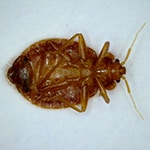
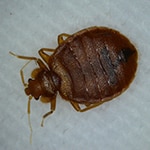
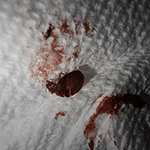
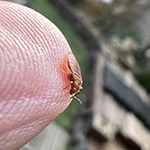
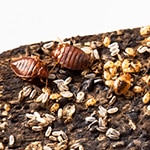
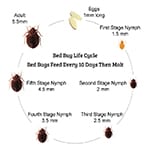
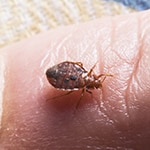
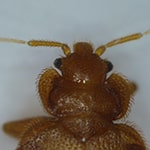



Leave a Reply